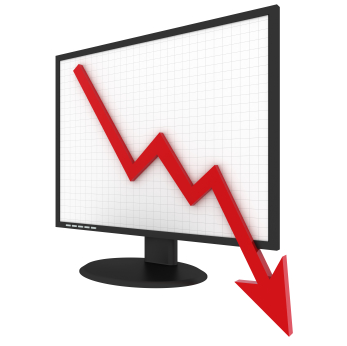You are viewing our site as an Agent, Switch Your View:
Agent | Broker Reset Filters to Default Back to ListNegative Equity and Home Values Decline
March 01 2010
Despite some areas experiencing flattening or reversal of home value declines last year, one in five markets now showing signs of a possible double dip in homevValues, according to Q4 2009 Zillow® Real Estate Market Reports.
one in five markets now showing signs of a possible double dip in homevValues, according to Q4 2009 Zillow® Real Estate Market Reports.
Key facts:
- Negative equity remains high at 21 percent of all single family homes with mortgages, but was flat quarter-over-quarter.
- U.S. home values fell 5 percent year-over-year, and declined 0.5 percent quarter-over-quarter, marking the 12th consecutive quarter of year-over-year declines.
- In one in five, or 29 of the 143 markets tracked by Zillow, home values have flattened or have begun to decrease again after showing at least five consecutive monthly increases during 2009—early signs of a what could become a “double dip.”
SEATTLE—Feb. 10, 2010—Home values across the country declined again in the fourth quarter of 2009, as the Zillow Home Value Index[i] fell 5 percent year-over-year, and 0.5 percent quarter-over-quarter, to $186,200. That marked the 12th consecutive quarter of year-over-year declines, according to the fourth quarter Zillow Real Estate Market Reports[ii].
Despite home value declines seen across most of the country throughout 2009, some markets experienced what appeared to be a bottom in home value declines, or even increases in home values during the year. However, the fourth quarter of the year brought signs that the fledgling recovery of home values in many of these markets is slowing again. If the declines are sustained, the result will be a “double dip[iii]” in home values, defined as two periods of sustained declines in home values separated by a brief period of stabilization or recovery.
One in five, or 29 of the 143 markets tracked by Zillow, showed at least five consecutive month-over-month increases in home values during 2009 before beginning to flatten or fall again in the second part of the year. These markets include the Boston metropolitan statistical area (MSA), the Atlanta MSA and the San Diego MSA.
Home values in an additional 29 markets, including the Los Angeles and New York MSAs, increased on a month-over-month basis each month throughout the fourth quarter. However, the rate of increase slowed from November to December in 21 of those markets, and several appear likely to experience several months of sustained decline in early 2010.
The percent of single family homes with mortgages in negative equity was essentially flat from the third to the fourth quarter, changing from 21 percent in Q3 to 21.4 percent in Q4. This comes after a decrease in negative equity from the second quarter’s 23 percent.
The number of homeowners losing their homes to foreclosure[iv] across the country reached a peak in December, with more than one in every thousand homes being foreclosed—a number not reached since Zillow began recording national foreclosure data in 2000.
“While we have seen strong stabilization in home values during 2009, there are clear signs that they will turn more negative in the near-term,” said Zillow Chief Economist Stan Humphries. “What we saw in mid-2009 was a brief respite from a larger market correction that has not yet run its course. The good news is that, for those markets that will see a double dip in home values before reaching a definitive bottom, this second dip will not be a return to the magnitude of depreciation seen earlier, but rather will look more like a modest aftershock of the earlier downturn.
“The recent stabilization owed a lot to policy support in the form of tax credits, lower interest rates and increased Federal Housing Administration lending. The remaining correction in home values we’ll see in the first half of this year is a function of market fundamentals, such as the increasing flow of foreclosures, high levels of inventory in the market and a probable decrease in demand as the impact of the tax credit wanes and mortgage rates rise. While the next few months are likely to bring further home value declines in most markets, we do expect to see a national bottom in home prices by the middle of this year. Thereafter, home values are likely to bounce along the bottom with real appreciation remaining negligible for some time.”
Foreclosure resales[v] across the country remained high, making up more than one-fifth (20.3 percent) of all U.S. home sales in December. Foreclosure resales also made up the majority of sales in several MSAs, including the Merced, CA MSA (68.3 percent), the Las Vegas MSA (64 percent) and the Modesto, CA MSA (62 percent). Additionally, 28.5 percent of home sales nationwide sold for less than what the seller originally paid.
Several markets across the country showed positive longer-term appreciation. Home values increased year-over-year in 27 of 143 markets and remained flat in 15.
The Boston MSA was the largest area with year-over-year appreciation, despite its more recent downturn in home values. The area’s Zillow Home Value Index rose 1.9 percent in 2009. Home values in the Boston area rose for eight months in 2009, which outweighed the recent declines.
To view the original press release from Zillow News, please click here.









